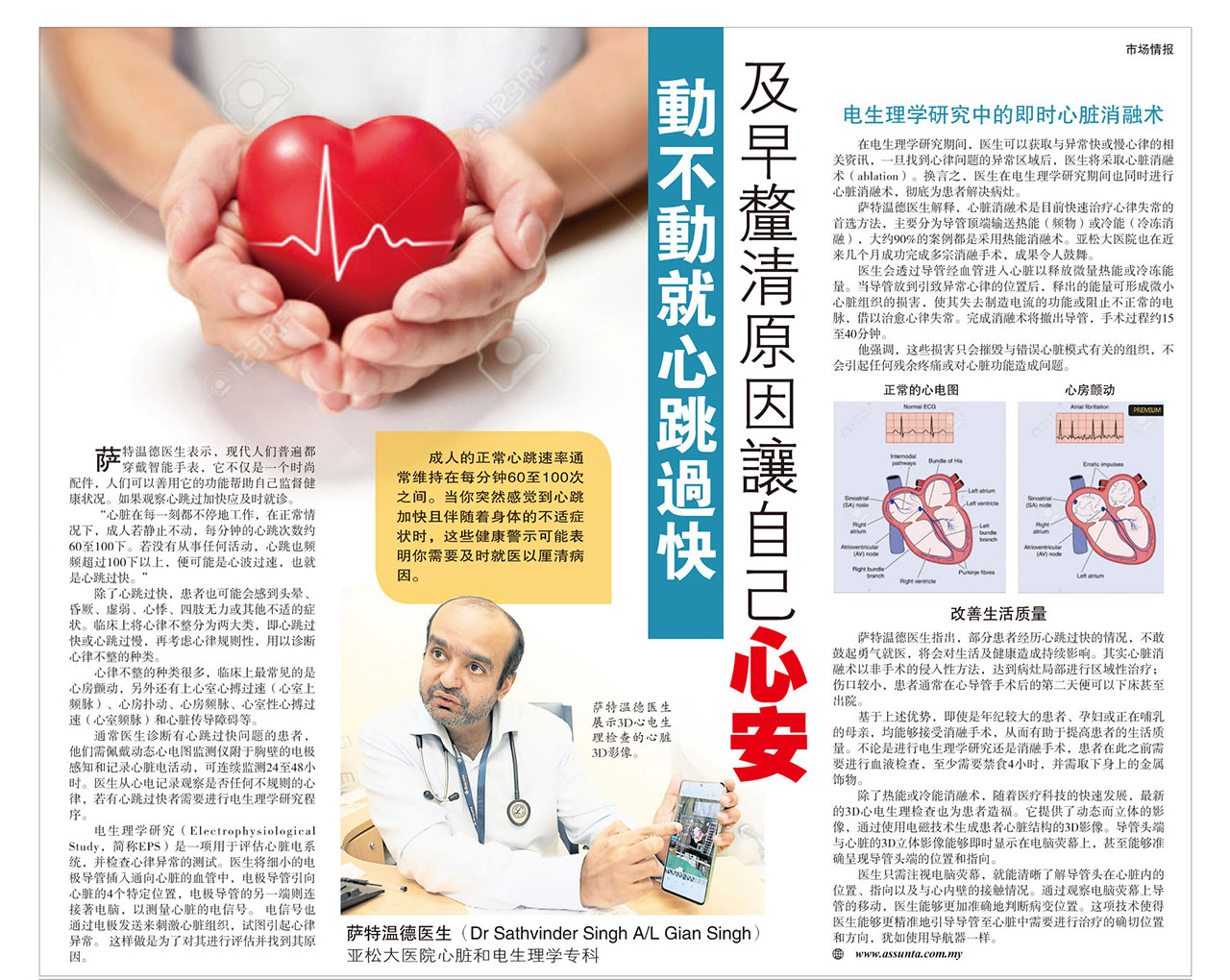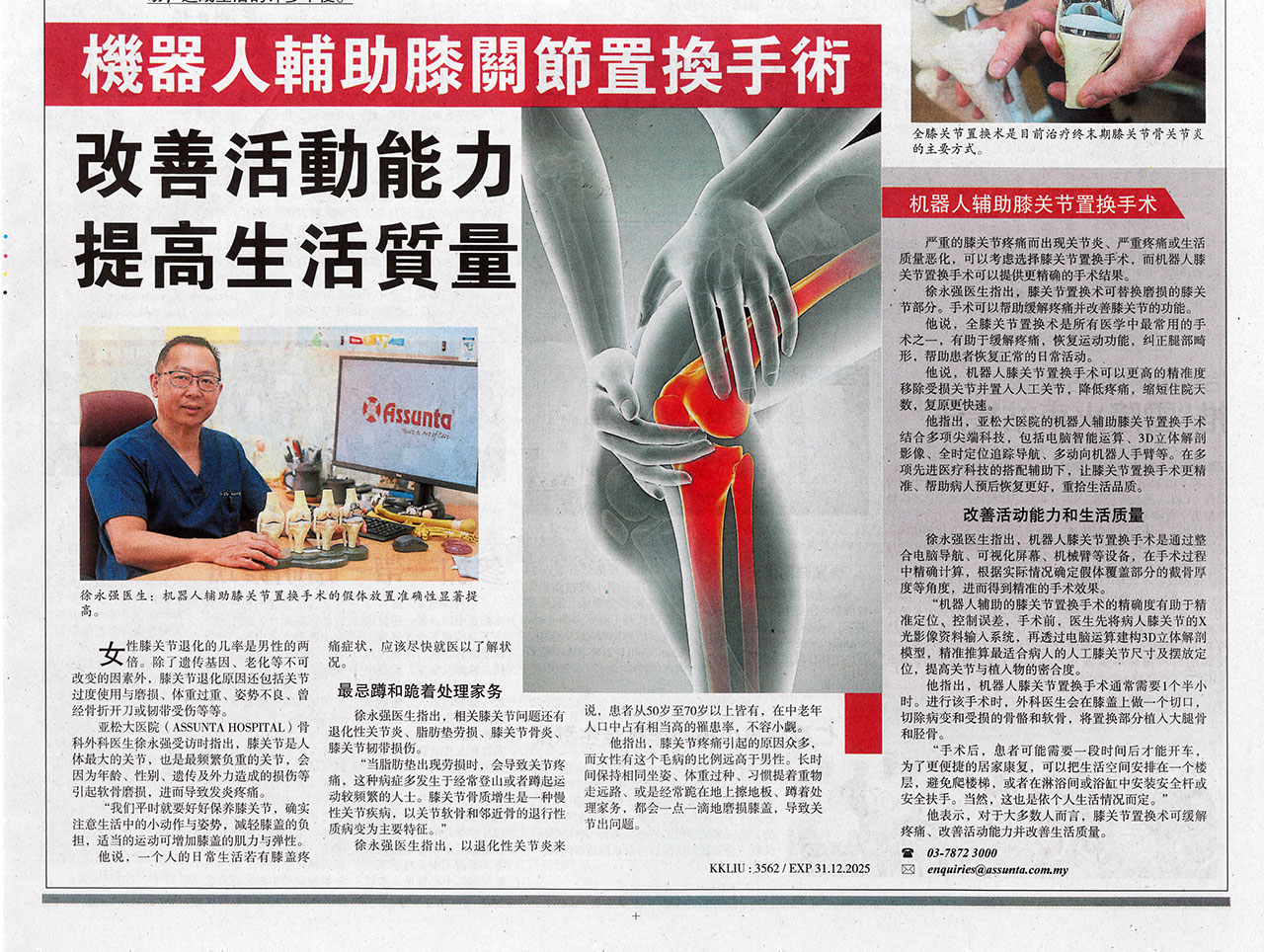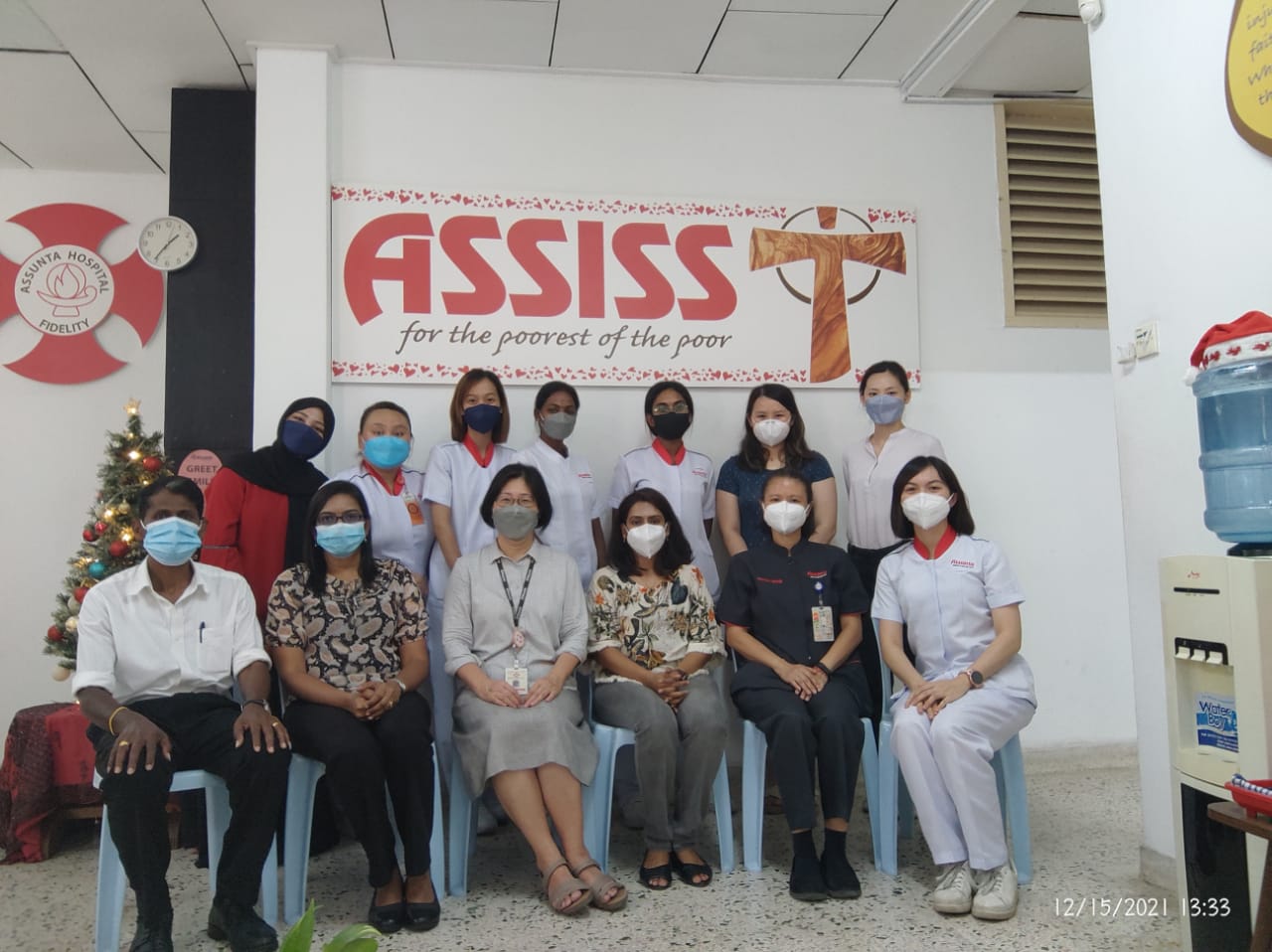The spaces under, above, between and behind your eyes that surround the nasal cavity contain four small, hollow spaces called paranasal sinuses. These sinuses drain into the nasal cavity through small channels, which unfortunately, can become obstructed from many causes. Some of these include inflamed membranes, infected mucous membranes or bone structure. Repeated sinus infections or allergies can contribute and worsen the obstruction. It is the body’s natural defense to create and secrete mucous in response to each of these.
Generally, these symptoms are initially treated with combinations of antibiotics, decongestants, nasal saline spray and steroids via nasal spray. If this medical management is unsuccessful and computed tomography (CT) demonstrates obstruction, surgery is frequently recommended. Balloon Sinuplasty has been shown to be a safe, effective and minimally invasive method to expand and dilate the sinus outflow.
Balloon Sinuplasty uses a small, flexible balloon catheter to open up blocked sinus passageways and facilitate mucus drainage that builds up in patients suffering from acute (failure of medical treatment) and chronic sinusitis. Unlike traditional sinus surgery, Balloon Sinuplasty requires no cutting and no removal of bone and tissue.
The procedure uses a surgical tool to open the sinuses and permit them to drain. At the time of opening the sinuses with Balloon Sinuplasty tools, the sinuses can be washed and irrigated to remove mucous and bacterial infections.

Sinuplasty – A new tool
A simple procedure using a balloon up the nose can clear your stuffy sinus and spare you painful surgery
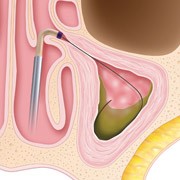 Step 1: A balloon catheter is inserted into the inflamed sinus
Step 1: A balloon catheter is inserted into the inflamed sinus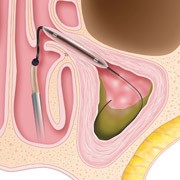 Step 2: The balloon is inflated to expand the sinus opening
Step 2: The balloon is inflated to expand the sinus opening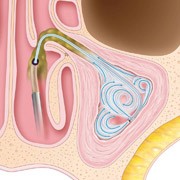 Step 3: Saline is sprayed into the inflamed sinus to flush out pus and mucus.
Step 3: Saline is sprayed into the inflamed sinus to flush out pus and mucus.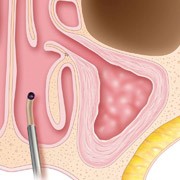 Step 4: The system is removed, leaving the sinuses open
Step 4: The system is removed, leaving the sinuses open
Advantages of Balloon Sinuplasty
- Safe and effective
- Uses less medication
- Minimally invasive
- Reduced bleeding
- Reduced surgical time
- Fewer complications
- Faster healing
- Short postoperative care
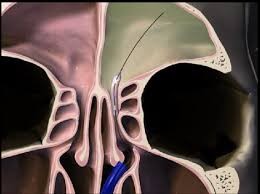
An excellent, safe procedure
Disease, previous surgery, and normal anatomical variations can pose a challenge to performing the safest and most effective endoscopic sinus surgery, even with a detailed knowledge of anatomy and surgical skill. Avoiding orbital injuries, entry into the brain and the carotid artery are paramount.
Balloon Sinuplasty is an excellent, safe technology to help with the symptoms of sinusitis in revision cases. The frontal sinus remains a challenge for ENT surgeons due to the complexity of the anatomy in this region, for instance, the partial clearance of fronto ethmoidal cells cause adhesions. When inflated, the balloon micro-fractures the bone, which is then expected to heal in the newly displaced position and not “rebound”. Clinical results suggest dilation is durable.
Functional endoscopic sinus surgery (FESS) procedures performed in conjunction with navigation solutions (image guided systems) are highly effective treatment strategies for complicated acute and chronic sinusitis, yet recurrent sinus diseases do occur due to bone cutting and removal. Patients may eventually require radical surgery, which can cause osteitis or chronic bone inflammation and crusting, which ultimately leads to Atrophic Rhinitis or Empty Nose Syndrome.
How a balloon expanded in the drainage pathway brings relief to sinusitis sufferers
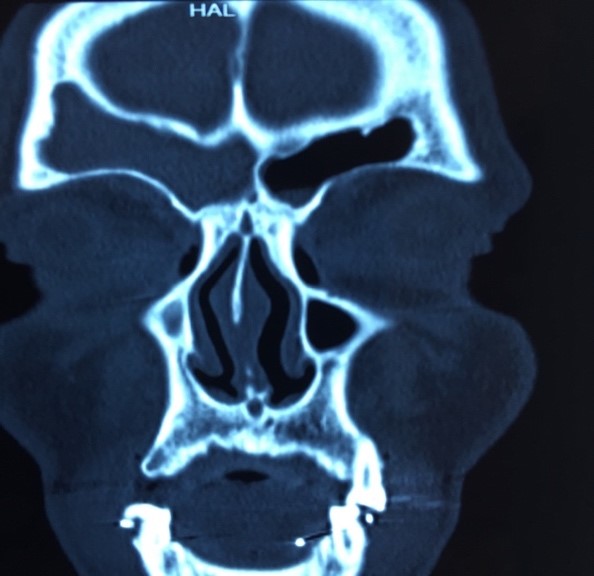
CT-Scan shows mucous and pus in frontal sinus.
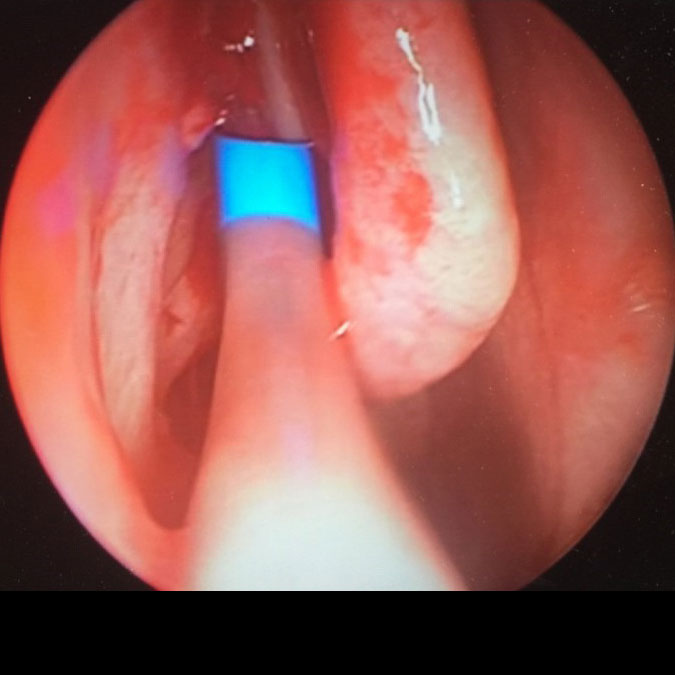 A balloon catheter is inserted into the frontal sinus.
A balloon catheter is inserted into the frontal sinus.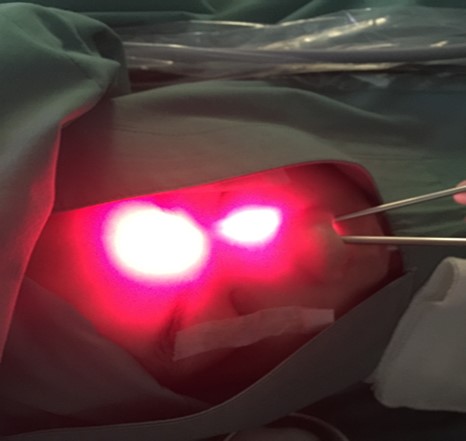 Bright frontal transillumination is present when the sinus is properly cannulated
Bright frontal transillumination is present when the sinus is properly cannulated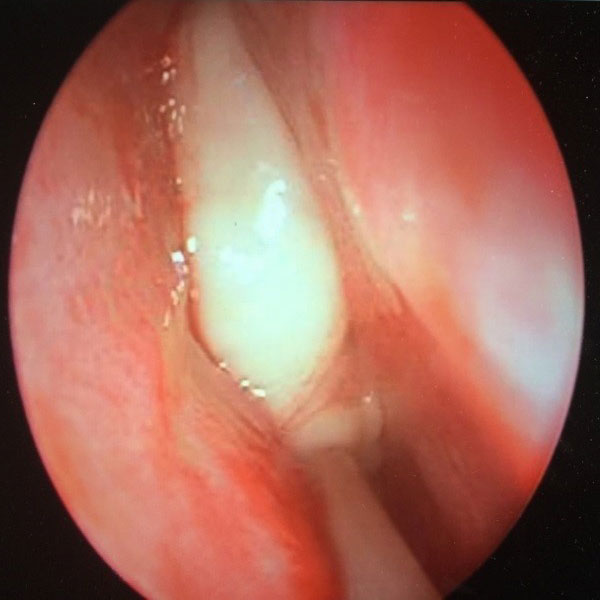 The balloon is inflated to expand the frontal recess and the mucopus is drained.
The balloon is inflated to expand the frontal recess and the mucopus is drained.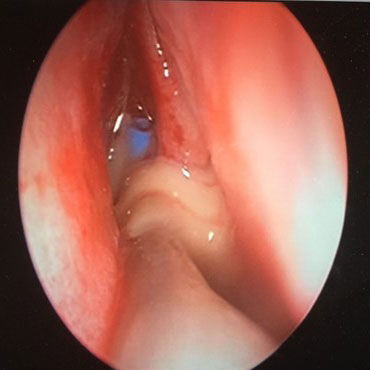 Saline irrigated into frontal sinus to flush out mucopus
Saline irrigated into frontal sinus to flush out mucopus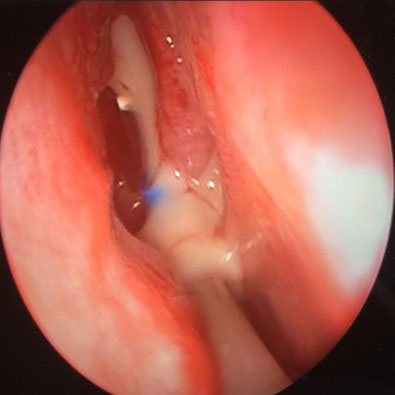 Mucopus sucked out
Mucopus sucked out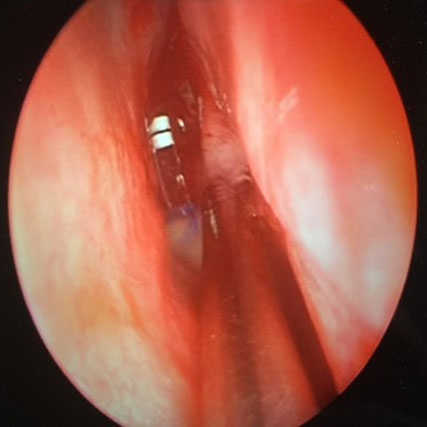 Continous saline irrigation until the secretion is clear
Continous saline irrigation until the secretion is clear
Summary
Balloon sinusplasty is a novel technology for ENT surgeons. It is a safe technique with low morbidity. Until recently, the only option was functional endoscopic sinus surgery. Carried out under general anaesthetic, this involves cutting away inflamed tissue and opening the ostia using drills and burrs. This procedure is unsuccessful in about one in 10 patients, and recovery takes seven to ten days. Many sufferers refuse surgery and instead live with the symptoms.
Balloon Sinuplasty, however, allows patients to return to work after a day or two. The balloon creates tiny fractures in the tissue and as they heal, the ostia remain open. There is no elasticity in these tissues, so they don’t spring back but remain “widened”. Balloon sinus dilatation represents the first step toward tissue preservation techniques, and away from the destructive access techniques necessary for FESS.





